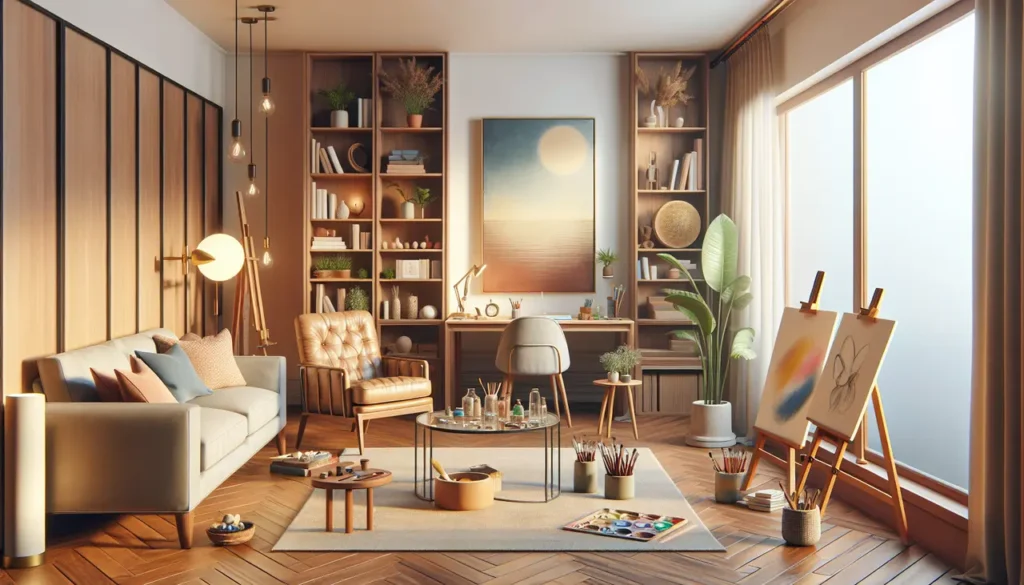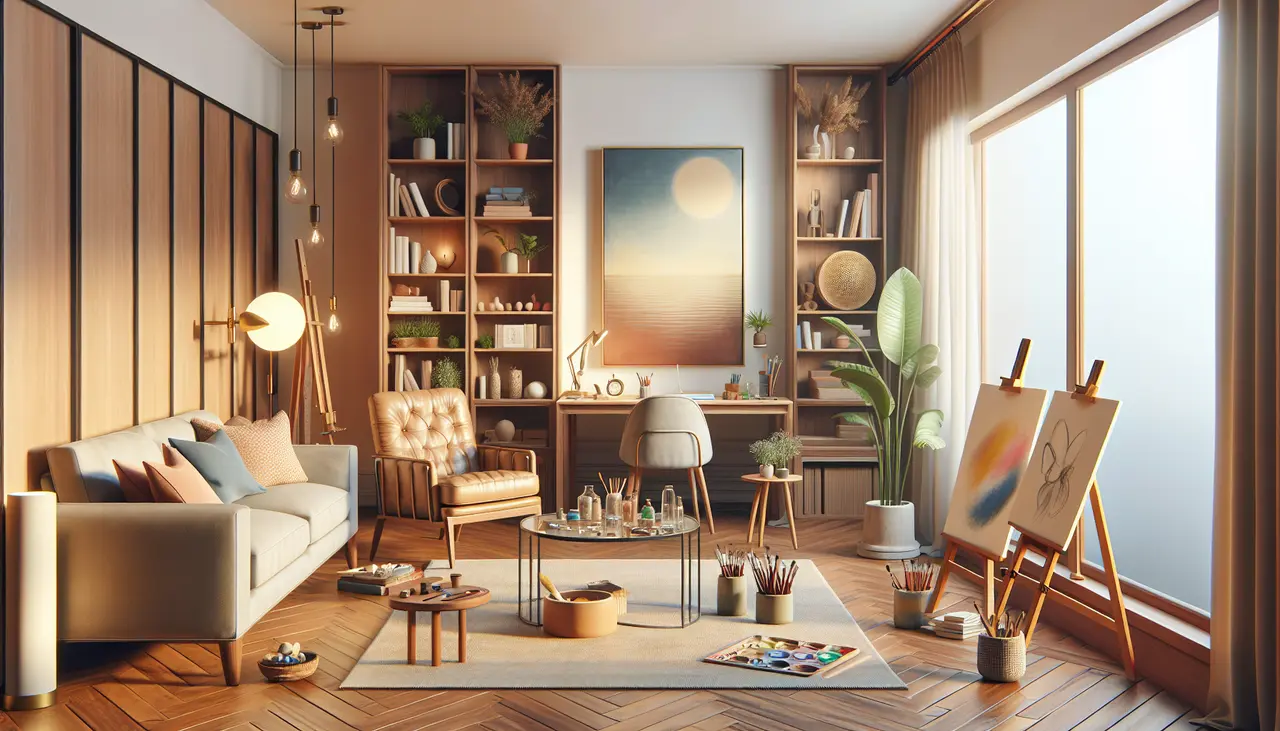Introduction to Art Therapy: What Is It?
Art therapy is a unique blend of mental health care and creative expression. It provides a different path for people to express their feelings and thoughts when words aren’t enough. Think of it as using art to communicate what’s going on inside your head, making it easier for therapists to understand and help. This approach isn’t just about creating beautiful artwork; it’s about using the creative process as a tool for healing. Artists or not, everyone can tap into art therapy to explore deep emotions, resolve conflicts, manage behavior, reduce stress, and increase self-esteem. It perfectly suits everyone, providing a safe space to uncover and address hidden emotions. What makes it stand out is its flexibility – it adapts to individual needs, making personal healing journeys uniquely impactful.
The Benefits of Art Therapy in Psychological Practice
Art therapy, when woven into your psychological practice, can open new doors for both clients and therapists. It’s not just about making art; it’s a powerful tool that helps people express what words cannot. This approach can significantly benefit clients struggling with trauma, anxiety, depression, or stress. Let’s break down why art therapy is such a game-changer.
First off, art therapy fosters self-expression. It provides a safe platform for individuals to explore and convey their feelings without the pressure of finding the right words. This form of therapy encourages creativity and can lead to unexpected breakthroughs because it allows emotions to flow freely through the act of creating.
Another big win with art therapy is its ability to enhance self-awareness. As clients create, they also reflect, which can help them gain insights into their emotional state. This reflection process is a vital part of healing because understanding oneself is the first step toward overcoming psychological hurdles.
Art therapy also strengthens coping skills. It introduces clients to a new, healthy way to deal with stress, anxiety, or depressive feelings. Instead of turning to negative coping mechanisms, they can channel their emotions into something positive and productive.
Lastly, this approach can be incredibly empowering. It gives clients control over their healing process. Through art, they can visualize their strength and resilience, which boosts their confidence and empowers them to face their challenges head-on.
Incorporating art therapy into your practice isn’t just an alternative treatment option; it’s a holistic tool that can complement traditional therapeutic methods, offering a unique pathway to healing that might be exactly what some clients need.
Understanding Who Can Benefit From Art Therapy
A wide range of people find help and healing through art therapy. It’s not just for those who feel they’re good at art. From children who can’t easily talk about their feelings to adults struggling with stress, anyone can benefit. This includes folks dealing with anxiety, depression, trauma, and physical health issues like brain injuries or chronic conditions. Veterans dealing with PTSD, individuals facing emotional challenges, and older adults experiencing memory loss due to dementia also find comfort in art therapy. It’s about expressing yourself and finding relief, no matter your age or situation.
Integrating Art Therapy: Starting Points for Practitioners
To kick off integrating art therapy into your psychological practice, first, ensure you understand what art therapy entails. It’s not just about drawing; it involves using artistic methods to help clients express themselves and address emotional issues. Now to the starting points. Get trained. It’s crucial. Look for accredited programs or workshops that specialize in art therapy. Having a solid foundation is key to offering effective therapy. Know your tools. Familiarize yourself with different art materials and their uses in therapy. This includes everything from paint and clay to digital mediums. The more tools you have, the more options your clients have to express themselves. Create a conducive space. Your therapy space needs to inspire creativity. Make sure it’s comfortable, inviting, and stocked with art supplies. A welcoming environment encourages clients to open up through art. Start slow. Introduce art therapy gradually into your practice. Begin by incorporating small, art-based activities into your sessions and gauge your clients’ responses. Stay informed. Art therapy is a dynamic field. Keep up with the latest research, techniques, and trends to ensure your practice remains relevant and effective. Remember, integrating art therapy into your psychological practice isn’t just about adding a new tool. It’s about offering your clients a unique path to healing and self-discovery.
Key Art Therapy Techniques and Approaches
In art therapy, therapists use art-based activities to help people express themselves and heal emotionally. Here’s a straightforward look at key techniques and approaches in art therapy:
- Directive and Non-Directive Approaches: Directive approaches involve giving clients specific tasks or prompts, while non-directive approaches let them create freely. Each has its place, depending on the client’s needs.
- Drawing and Painting: Simple yet powerful, these activities allow individuals to project their inner thoughts onto paper or canvas, serving as a mirror to their emotions.
- Sculpture: Working with clay or other materials can help clients express and work through more complex feelings, offering a tactile dimension to their expression.
- Collage Making: Choosing images and assembling them into a collage can help clients articulate feelings they struggle to put into words, facilitating indirect expression of complex emotions.
- Phototherapy: Using photographs as a part of therapy encourages clients to explore memories, personal identity, and relationships through visual means.
Remember, the goal isn’t to create a masterpiece but to use the art-making process as a tool for insight and healing. These techniques, when applied thoughtfully, can significantly deepen the therapeutic process, aiding clients in exploring their emotions and experiences in a safe and creative environment.
Necessary Materials and Setting Up Your Space
To start using art therapy in your psychological practice, you’ll need specific materials; think pencils, markers, watercolors, clay, and collage materials. These basics enable your clients to express themselves in a variety of ways. You don’t need the fancy stuff; quality items that don’t break the bank will do just fine. The idea is to have a diverse range of options so each person can find their preferred medium.
When it comes to setting up your space, think comfort and privacy. You need a room that feels safe and inviting, where your clients can open up through their art without feeling judged or exposed. Make sure there’s plenty of natural light and consider having an area where artwork can be displayed or stored safely. Also, a comfortable seating arrangement is crucial, whether it’s chairs or floor cushions, to allow for flexibility during the therapy sessions.
Remember, the space should inspire creativity and not hinder it. Keep it organized but not clinical; a warm, welcoming environment is key. This setup not only helps in the therapeutic process but demonstrates to your clients that you respect and value their creative journey.
Developing Art Therapy Programs Within Your Practice
To develop an art therapy program within your practice, start by understanding the basics of art therapy. This approach uses creative processes to help people express and deal with emotions, often where words fail. Get trained or hire professionals who are trained in art therapy. They’ll know how to guide your clients through the creative process effectively. Next, set up a dedicated space. Your art therapy area should be welcoming and stocked with various art supplies, allowing clients the freedom to express themselves in multiple mediums. Also, integrate art therapy with your existing treatments. It should complement not replace other therapeutic techniques you’re offering. Finally, don’t forget to measure outcomes. Keep track of your clients’ progress and how art therapy contributes to their overall healing journey. This feedback will be crucial for refining your program and demonstrating its value to both clients and practitioners.
Overcoming Common Challenges and Misconceptions
Many psychologists hesitate to integrate art therapy into their practice due to common challenges and misconceptions. For starters, there’s the belief that art therapy is only for kids or those skilled in art, which is far from the truth. Art therapy works across all age groups and requires no artistic talent to be beneficial. It taps into the expressive and creative sides of patients, allowing for a different form of communication.
Another challenge is the perception that art therapy isn’t evidence-based. However, numerous studies have shown its effectiveness in treating a variety of psychological conditions, including depression, anxiety, and PTSD, by providing emotional release and a new perspective on personal issues.
A practical challenge is the setup cost and space. True, incorporating art therapy means you’ll need physical space for patients to create, along with materials like paints, clay, paper, and markers. But this doesn’t have to be extravagant. A small, dedicated corner of your practice can serve well, and supplies can be bought gradually or as needed.
Lastly, there’s the challenge of training. Not all psychologists have the background in art therapy techniques, but several workshops, courses, and certification programs are available to get started. Investing in this training not only diversifies your therapeutic offerings but also sets you apart in your field.
Overcoming these challenges might require a shift in perspective and a willingness to step out of the conventional therapy comfort zone. But the results—seeing patients find new ways to express and understand themselves—can be profoundly rewarding.
Measuring the Impact and Effectiveness of Art Therapy
To measure the impact and effectiveness of art therapy, psychologists and therapists often look at the improvements in their clients’ emotional and mental health. This can involve observing changes in a person’s ability to cope with stress, improvements in their self-esteem, or their capacity to express thoughts and emotions that they might have struggled to articulate through words alone. Using standardized assessment tools and personalized evaluations, therapists can track progress over sessions. Additionally, feedback from clients about their experience and perceived benefits of art therapy provides valuable insight into its effectiveness. It’s key to remember, the impact of art therapy might not always be immediate. Patience and consistency are crucial as individuals work through their unique healing processes.
Conclusion: The Future of Art Therapy in Psychological Practices
Art therapy has carved a unique niche in the sphere of psychological practices, offering a blend of creativity and healing that speaks to a diverse array of clients. Looking ahead, it’s clear that art therapy holds a promising future, poised to become an integral part of more holistic and patient-centered approaches to mental health care. The increasing recognition of its benefits in enhancing emotional expression and promoting self-discovery positions art therapy not just as an adjunct to traditional therapy modalities but as a pivotal component in its own right. As we move forward, integrating art therapy into psychological practices will likely evolve, driven by ongoing research, technological advancements, and a deepening societal appreciation for the therapeutic power of the arts. This evolution is anticipated to expand the reach of art therapy, making it more accessible to those who stand to benefit from its unique approach to healing. Overall, the journey of art therapy within psychological practices is on an upward trajectory, promising richer, more nuanced, and profoundly transformative experiences for both practitioners and clients alike.




